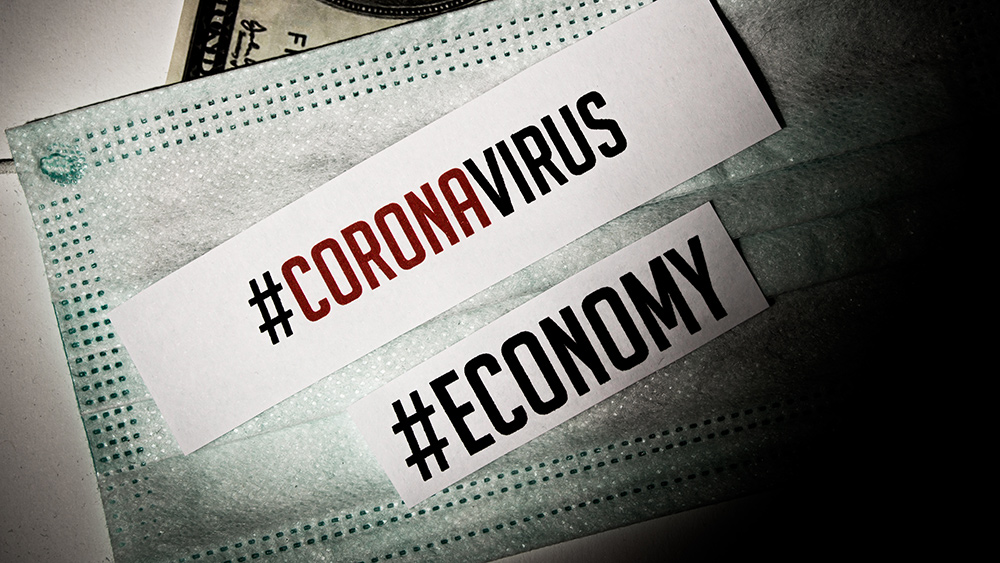6 Types of rope and why you need them for survival
07/09/2021 / By Divina Ramirez

Ropes are one of the essential tools you need in your survival kit or bugout bag (BOB). But no one rope is ideal for everything. In a survival situation, it pays to have different ropes so you can use what best suits your needs.
Below are the six most popular types of rope among preppers and survivalists: (h/t to SurvivalCache.com)
1. Paracord
Paracord is a synthetic type of rope made from nylon. It’s the same rope used in parachutes, largely because of its strength and durability. Paracord comes in many sizes, but the most popular one is the 550 paracord, so named because it can hold up to 550 pounds (lbs). This rope can be easily taken apart and is lightweight.
Paracords have a small diameter, which can make them difficult to hold or grab onto. Because of that small diameter, paracords can also be cut pretty easily. They can also stretch when used with heavy loads.
2. Jute twine
Jute twine is a natural rope made from plant fibers, which is why it’s soft on the hands. It also holds knots well and is easier to work with than synthetic types of rope. Jute twine is ideal for all manners of small tying tasks.
Jute twine comes in different sizes. Its tensile strength will depend on the size. Generally speaking, jute twine can hold anywhere from 50 lb to 500 lb. Plus, you won’t have to worry about picking up pieces of cut jute because it is biodegradable. It will just degrade over time. Jute twine also makes a great fire starter.
Take note that jute twine retains moisture, which can affect its tensile strength.
3. Sisal rope
Sisal rope is another type of natural rope made from plant fibers. It feels coarser than jute twine, which is why it can be rough on the hands. It also tends to hold its shape after it’s been wet and dried, which can make undoing knots difficult. Like jute twine, it also makes a great fire starter and degrades on its own.
4. Kevlar rope
Kevlar rope is a synthetic rope made from poly(p-phenylene terephthalamide). It’s widely considered to be the strongest rope on the market. In fact, Kevlar rope is sometimes used in place of steel cables in construction. Kevlar rope is resistant to extreme temperatures, water, fire and ultraviolet light.
But this strength comes at a cost, Kevlar rope is the most expensive rope on this list. Plus, tying and untying knots can significantly weaken this rope.
5. Plastic rope
Plastic rope is made from polypropylene, a thermoplastic polymer used in packaging for all kinds of consumer products. Because polypropylene is water-resistant, plastic ropes will float even if you try to submerge them fully in water. Plastic ropes are also not affected by mildew, unlike natural ropes like sisal and jute twine.
Plastic ropes are a great choice if you’ll be spending a lot of time in or around water. Make sure to keep it away from any heat sources as it is prone to melting. Otherwise, you’ll quickly find yourself with an unusable rope. Plastic ropes also don’t hold knots very well.
6. Bank line
Bank lines are made from polypropylene. They are typically used to create trotlines from fishing, hence their name. A trotline is a heavy fishing line with baited hooks attached at intervals. One end is secured to the shore, while the other is secured on the opposite shore or some other anchor point. (Related: Survival fishing: 5 tips for catching, eating, and preserving fish.)
Though bank lines are designed specifically for fishing, they can be used as general-purpose ropes for all kinds of outdoor tasks, especially since they don’t tangle easily. Take note that bank lines can have a strong odor when new because they are tarred during manufacturing to make them resistant to outdoor elements.
Learn more about other essential survival tools at Survival.news
Sources include:
Tagged Under: Gear, preparedness, prepper, prepper tools, prepping, rope, survival, survival bag, survival tools, tools
RECENT NEWS & ARTICLES
COPYRIGHT © 2018 PANIC.NEWS
All content posted on this site is protected under Free Speech. Panic.news is not responsible for content written by contributing authors. The information on this site is provided for educational and entertainment purposes only. It is not intended as a substitute for professional advice of any kind. Panic.news assumes no responsibility for the use or misuse of this material. All trademarks, registered trademarks and service marks mentioned on this site are the property of their respective owners.





















